What Baker’s Yeast Is Better, and How to Replace Dry Yeast With a Live One
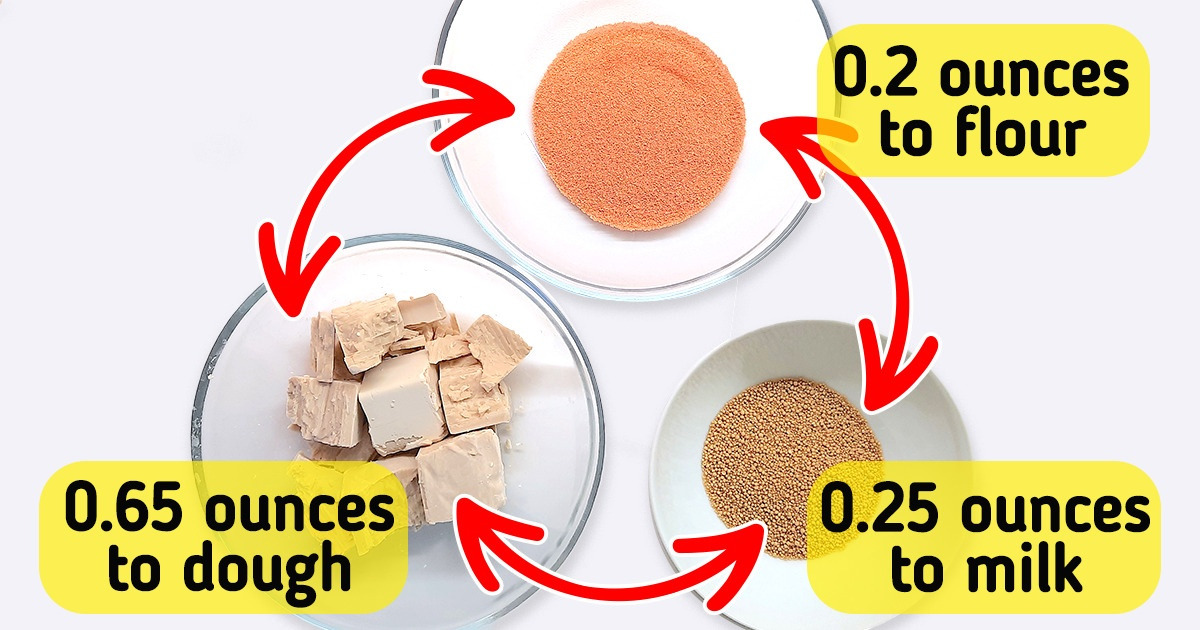
Baker’s yeast is indispensable when it comes to pastries. It helps the dough to rise, get saturated with oxygen, and form a pleasant soft crumb inside. It seems there’s no big difference between fresh and dry yeast, but this is the reason why you can be disappointed with the result of your baking: the dough can acquire an unpleasant taste and smell, suddenly “deflate” in the oven, or not rise at all.
5-Minute Crafts would like to tell you about the difference between dry and live yeast, and which of them to use.
The definition of yeast
Baker’s yeast is a product of the microorganisms, Saccharomyces cerevisiae, which is added to the dough so that it rises during the baking process. This happens thanks to these microorganisms that eat sugar (more precisely, glucose) and, as a result, emit carbon dioxide, ethyl alcohol, and organic acids, which are absorbed by the dough. As a result, the dough increases in volume, becomes elastic, and acquires a specific taste after baking. You can see a similar reaction when you add baking soda or baking powder to muffin batter.
If there is no refined sugar in the dough, but there’s starch, other sugars, or alcohol, yeast will produce special enzymes to turn them all into glucose and then eat it. But to increase the activity of yeast, a small amount of sugar should be added to the dough. If there is a lot of sugar and there is salt, then the activity of yeast, on the contrary, will be suppressed.
The duration of this process depends on the temperature: after kneading the yeast dough, it’s best to leave it at temperatures between 70°F and 100°F and wait until it increases in volume by about 2 times nd becomes elastic and “springy.” The amount and type of yeast also play an important role.
Fresh (compressed) yeast
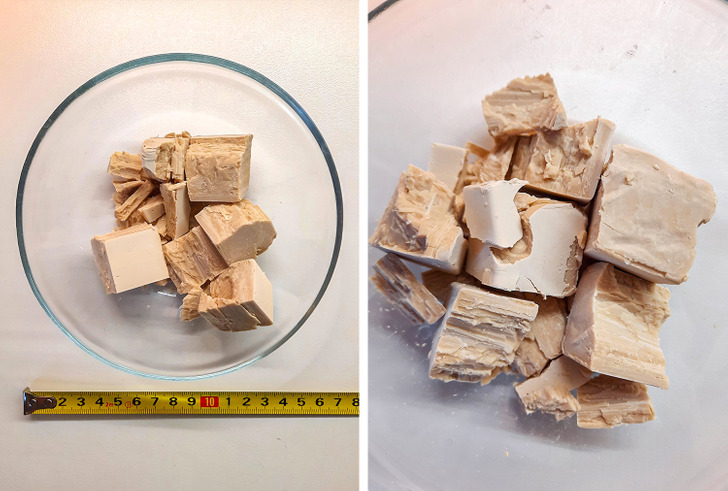
This yeast consists of living yeast cells. It is sold in compressed form. It looks dense but can be broken easily with the hands, and it has a specific smell and creamy texture. Such yeast contains about 70% moisture (it’s usually indicated on the package) and therefore, should not be dry. You need to store it in a tightly closed container in the refrigerator for no more than 2-3 weeks from the date of production or up to a year in the freezer (in this case, manufacturers recommend leaving the yeast at room temperature for 30-45 minutes before use). Live yeast has a milder taste (compared to dry yeast) and tends to impart sweeter tastes.
How to use it: It can be added directly to the dough, but if you are not sure whether the yeast is fresh, take the right amount of yeast, knead it, and put it in a bowl. Add a little sugar and half a cup of warm water or milk. Mix everything well and leave it for 5-10 minutes in a warm place. If everything is done correctly, a foam will form on the surface, showing that the microorganisms are alive and eating sugar. Now the yeast can be added to the dough.
Active dry yeast
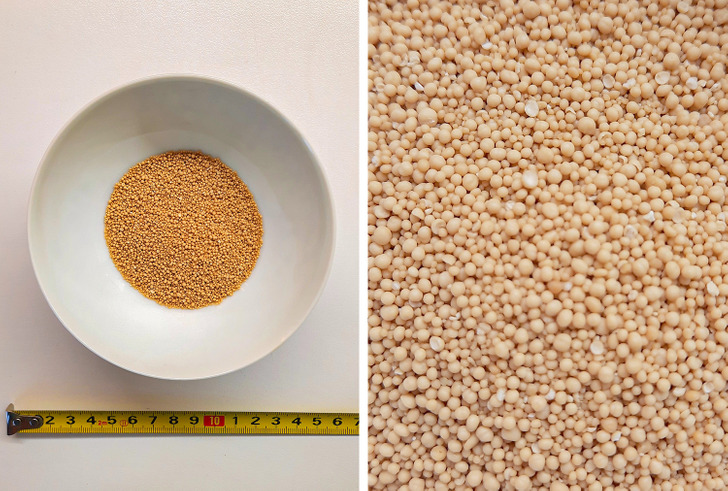
Unlike live yeast, active dry yeast looks like yellow-brown round granules that have a specific smell. Their activity is slightly lower than that of a live one, but it can be stored longer in a cool, dry place (preferably in the refrigerator).
How to use it: Take the necessary amount of active dry yeast, add 1/2 teaspoon of sugar, then add 1/2 cup of warm water or milk. Mix everything well and leave for 10 minutes. When foam forms on the surface, the yeast can be added to the dough, and you can continue cooking according to the recipe. This step should not be skipped, as active dry yeast needs to be activated, hence the name. This must be done before adding it to the dough and before mixing with other ingredients.
Instant yeast
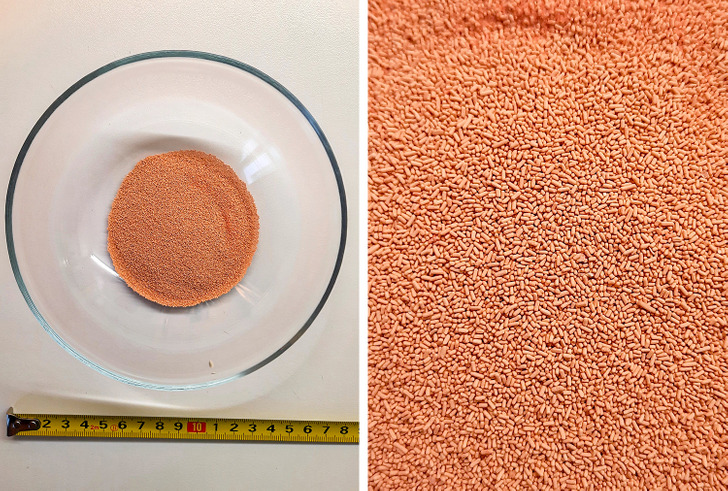
This yeast is also dry, and its cylindrical granules are even smaller in size. They should not be diluted in water but added to flour. The instant yeast dough rises faster than the active dry yeast. In addition, there is a type of dry yeast that provides rapid rising: the size of its granules is even smaller, which helps them dissolve faster.
How to use it: Dry instant yeast is specially formulated to be added directly to flour, so it doesn’t need to be diluted with sugar and water or milk beforehand.
There is also liquid yeast (cream yeast), which is grown in a fermenter and is used in large bakeries.
How to bake using yeast
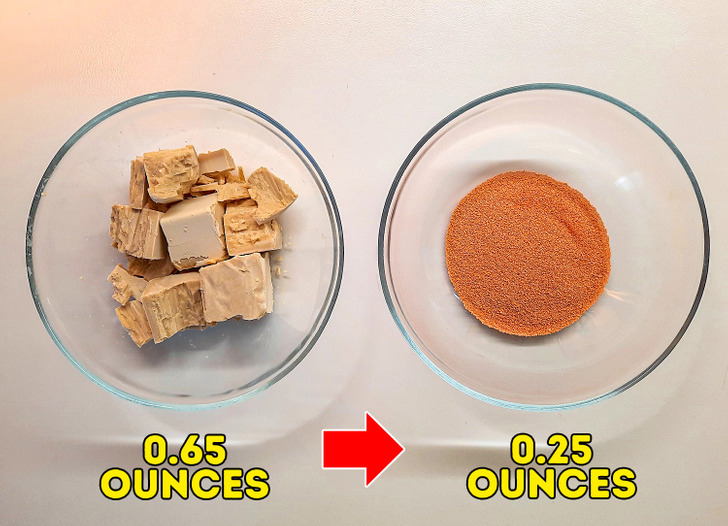
- To replace live yeast, you need to take dry yeast, almost 3 times less, which means 0.65 ounces of compressed yeast can be replaced with 0.25 ounces of dry yeast (regardless of whether it’s active or instant). Sometimes it’s advised to use a 2:1 ratio (2 parts live yeast can be replaced with one part dry yeast).
- Pay attention not just to the type of yeast, but also to the recipe, especially if it’s from an old cookbook. For example, at the beginning of the last century, all recipes were designed for live yeast, since dry yeast only started to get produced in the 1940s, and dry instant yeast, 30 years later.
- If an old recipe says that you need to add one packet of active dry yeast, then keep in mind that, most likely, it was about 1 tablespoon of yeast. Nowadays, the production technology has changed, so it’s enough to use 2 teaspoons of active dry yeast.
- There are situations where active dry yeast should not be replaced with instant yeast at a 1:1 ratio. For example, if you bake bread in a bread machine, the oven gets very hot to raise the dough, and this can cause the bread to rise too much and crack. In this case, take instant yeast by 1/4 less (so the ratio will be 1:3/4).
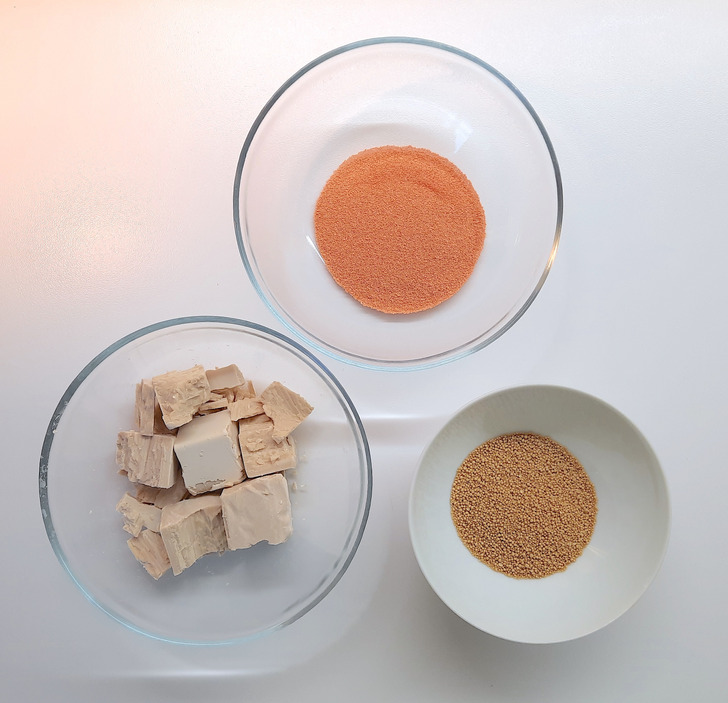
- When yeast dough is rising, don’t focus on time — the end result is more important. There are many factors that can cause the dough to take longer to rise, such as low atmospheric pressure, weather, or even the frequency of you baking something using yeast in the kitchen.
- An open packet of active dry or instant yeast is best stored in the refrigerator for no more than 3-4 months. Before use, it’s recommended to check the yeast: pour 1 teaspoon of sugar and a little more than 2 teaspoons of yeast into a bowl, add 1/4 cup of warm water, stir, and wait 10 minutes until bubbles appear on the surface — it’s a sign that the yeast is alive. If this is the case, add instant yeast to flour, or activate ordinary dry yeast in warm milk or water with added sugar.
- Dry instant yeast often loses its properties before its expiration date, which is indicated on the package. But you may realize it only after you’ve added it to the dough which, alas, hasn’t risen. In this case, you can add baking powder in an amount equal to the amount of yeast.